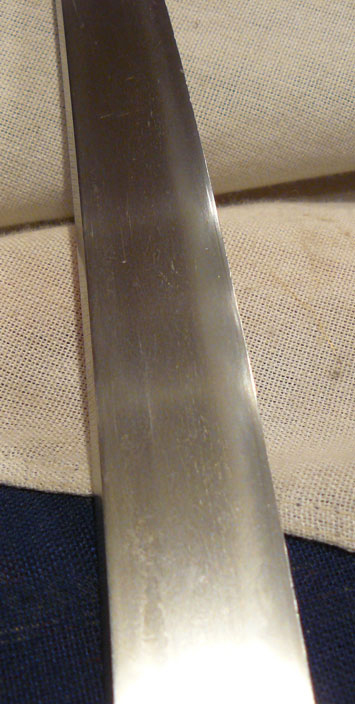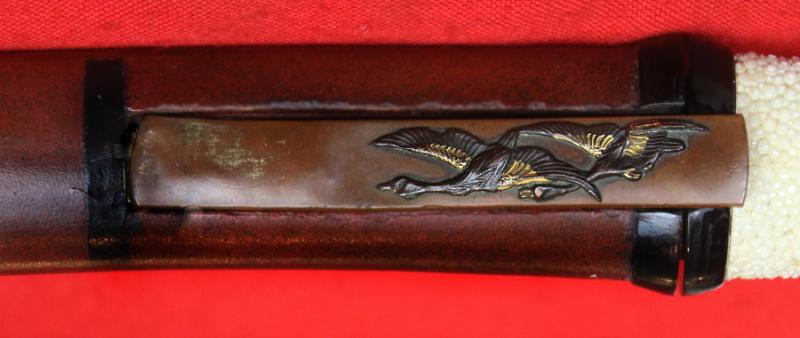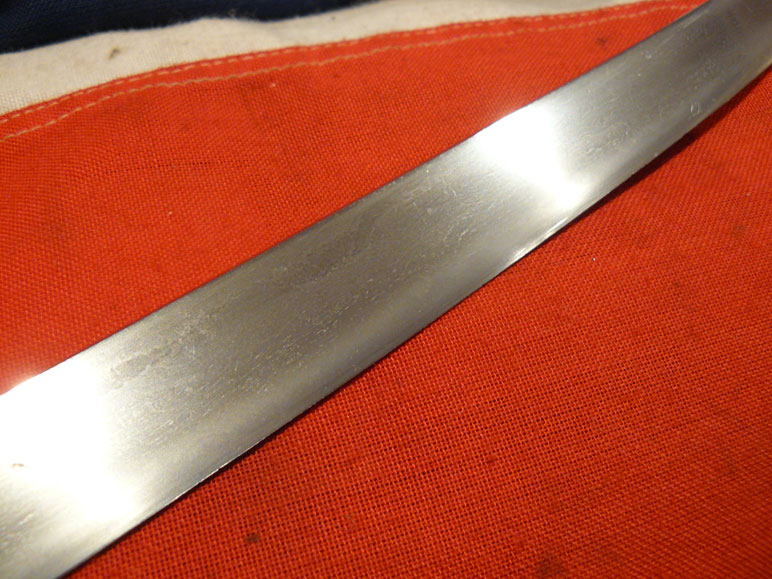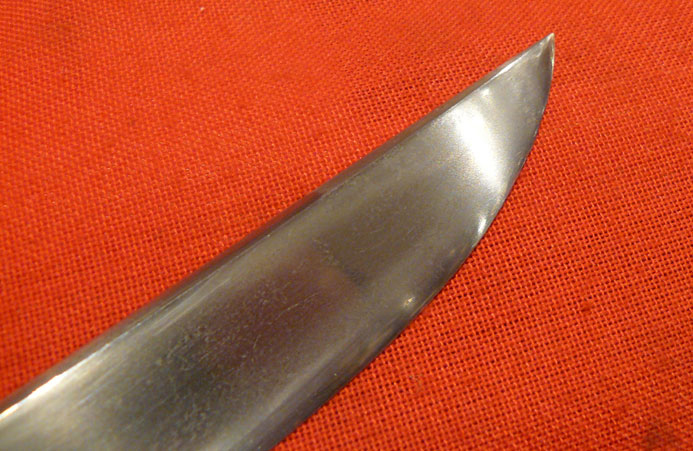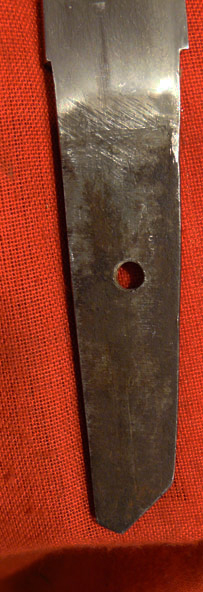A Good Shinto Aikuchi Tanto Samurai Dagger With a Fine & Beautiful Polish Blade. Around 400 years Old. All Original Edo Period Koshirae
The blade has a fine Hamon with a full, back edge temper, and a running itami grain hada. With giant rayskin bound hilt grip and black speckled dark red lacquer saya. Flying geese kozuka, carved buffalo black horn fittings. Shinto period, circa 1620.
Tanto first began to appear in the Heian period, however these blades lacked artistic qualities and were purely weapons. In the Early Kamakura period high quality tanto with artistic qualities began to appear, and the famous Yoshimitsu (the greatest tanto maker in Japanese history) began his forging. Tanto production increased greatly around the Muromachi period and then dropped off in the Shinto period. Shinto period tanto are quite rare. Tanto were mostly carried by Samurai; commoners did not generally carry them. Women sometimes carried a small tanto called a kaiken in their obi for self defence.It was sometimes worn as the shoto in place of a wakizashi in a daisho, especially on the battlefield. Before the 16th century it was common for a Samurai to carry a tachi and a tanto as opposed to a katana and a wakizashi. all the fittings and lacquer are original Edo period, the old saya lacquer has some usual wear marks, and the kozuka small utility knife handle has a small area of age denting.
As once told to us by an esteemed regular visitor, Victor Harris, to us here in our gallery, and the same words that are repeated in his book;
“In these textures lies an extraordinary and unique feature of the sword {all samurai edge weapons are called swords, despite however small} - the steel itself possesses an intrinsic beauty. The Japanese sword has been appreciated as an art object since its perfection some time during the tenth century AD. Fine swords have been more highly prized than lands or riches, those of superior quality being handed down from generation to generation. In fact, many well-documented swords, whose blades are signed by their makers, survive from nearly a thousand years ago. Recognizable features of the blades of hundreds of schools of sword-making have been punctiliously recorded, and the study of the sword is a guide to the flow of Japanese history.”
Victor Harris
Curator, Assistant Keeper and then Keeper (1998-2003) of the Department of Japanese Antiquities at the British Museum. He studied from 1968-71 under Sato Kenzan, Tokyo National Museum and Society for the Preservation of Japanese Swords
Overall length in saya approx 16 inches, blade 11 inches.
Code: 20925
2475.00 GBP




